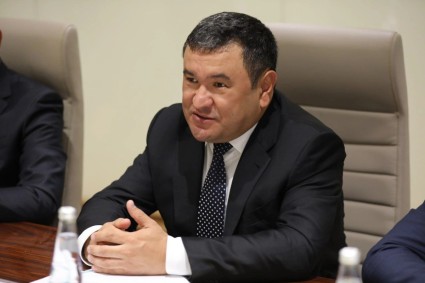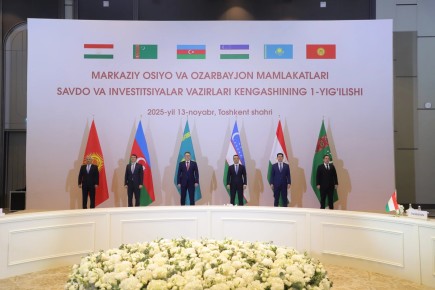Recent developments: As a result of the Russian Federation's invasion of Ukraine, growth in Europe and Central Asia (ECA) is estimated to have slowed sharply in 2022, to 0.2 percent. This reflects contraction in Russia and a deep recession in Ukraine. Excluding these two countries, growth in ECA nearly halved in 2022, to an estimated 4.2 percent, with broad-based deceleration across the region.
The economic slowdown in ECA was less pronounced than initially anticipated. Instead of contracting in 2022, output grew at a meager pace. In many economies, an upward revision for 2022 reflected stronger- than-projected growth in the euro area in the first half of the year, a quicker-than-expected rebound in international travel as economies reopened, and additional government measures that helped shield households and firms from sharp increases in food and energy prices.
The improvement in 2022, however, varied across ECA. A surge in capital and migrants from Russia, as well as a possible rerouting of some trade and financial flows, helped fuel domestic demand and services exports in several economies, particularly in the South Caucasus. In energy exporters, higher energy prices supported activity and fiscal balances. In other economies, however, upward revisions for 2022 were more modest amid large spillovers from the invasion of Ukraine.
Median headline inflation in ECA surged in 2022—more sharply than in any year since 1998—as rising commodity prices, particularly for energy and food, and currency depreciations passed through to consumers in many economies. High energy and food prices carved into incomes, especially for the poorest households. Inflation continued to significantly exceed central bank targets throughout the region.
Outlook: Output in ECA is projected to remain virtually flat in 2023, with growth of only 0.1 percent—a downward revision of 1.4 percentage points since June 2022. Although much of the projected weakness in regional growth this year emanates from a further output decline in Russia, forecasts for 2023 growth have been downgraded for over 80 percent of ECA's economies.
The deterioration in the near-term outlook mainly reflects the impact from Russia's cutoff of energy supplies to the European Union and additional monetary policy tightening in the euro area. These developments have adversely affected ECA's economies through high natural gas prices and weaker external demand for its goods and services. Recession in Russia and subdued growth in China are anticipated to weigh on activity, especially in the South Caucasus and Central Asia. Regional activity is also expected to continue to be dampened by tightening financing conditions as central banks grapple with above-target inflation. Output in 2023 is expected to fall 5.7 percent below pre-pandemic trends.
In Ukraine, growth is projected to resume in 2023, at a subdued rate of 3.3 percent, assuming that the war does not escalate further. Targeted attacks on critical infrastructure over the last few months have damaged half of Ukraine's power grid, with the country facing a sharp deficit in electricity and blackouts.
Risks: Risks to the baseline projections for region's growth remain skewed to the downside. Above all, a more prolonged or more intense war in Ukraine than assumed in the baseline could, apart from its humanitarian costs, cause significantly larger economic and environmental damage and greater potential for fragmentation of international trade and investment. A further rerouting of trade could partially mitigate the negative effects of the invasion and current account pressures for some regional economies.
Output in ECA could shrink in 2023 if the energy crisis deepens and triggers an economic downturn in the euro area or steeper recession in Russia. Tighter global financial conditions and the recent general appreciation of the U.S. dollar pose significant risks to financial stability in ECA, particularly for more indebted countries. Pandemic- and war-related increases in debt—combined with tightening global financing conditions—have sharply reduced fiscal space and amplified debt vulnerabilities, including from public debt rollovers and currency mismatches.
| 2020 | 2021 | 2022e | 2023f | 2024f | |
|
GDP at market prices (average 2010-19 US$) Albania |
-3.5 | 8.5 | 3.5 | 2.2 | 3.4 |
| Armenia | -7.2 | 5.7 | 10.8 | 4.1 | 4.8 |
| Azerbaijan | -4.3 | 5.6 | 4.2 | 2.8 | 2.6 |
| Belarus | -0.9 | 2.6 | -6.2 | -2.3 | 2.5 |
| Bosnia and Herzegovina a | -3.1 | 7.5 | 4.0 | 2.5 | 3.0 |
| Bulgaria | -4.0 | 7.6 | 3.1 | 1.7 | 3.3 |
| Croatia | -8.6 | 13.1 | 6.6 | 0.8 | 3.1 |
| Georgia | -6.8 | 10.4 | 10.0 | 4.0 | 5.0 |
| Hungary | -4.5 | 7.1 | 5.1 | 0.5 | 2.2 |
| Kazakhstan | -2.5 | 4.1 | 3.0 | 3.5 | 4.0 |
| Kosovo | -5.3 | 10.7 | 3.1 | 3.7 | 4.2 |
| Kyrgyz Republic | -8.4 | 3.6 | 5.5 | 3.5 | 4.0 |
| Moldova | -7.4 | 13.9 | -1.5 | 1.6 | 4.2 |
| Montenegro | -15.3 | 13.0 | 5.9 | 3.4 | 3.1 |
| North Macedonia | -4.7 | 3.9 | 2.1 | 2.4 | 2.7 |
| Poland | -2.0 | 6.8 | 4.4 | 0.7 | 2.2 |
| Romania | -3.7 | 5.1 | 4.6 | 2.6 | 4.2 |
| Russian Federation | -2.7 | 4.8 | -3.5 | -3.3 | 1.6 |
| Serbia | -0.9 | 7.5 | 2.5 | 2.3 | 3.0 |
| Tajikistan | 4.4 | 9.2 | 7.0 | 5.0 | 4.0 |
| Turkiye | 1.9 | 11.4 | 4.7 | 2.7 | 4.0 |
| Ukraine | -3.8 | 3.4 | -35.0 | 3.3 | 4.1 |
| Uzbekistan | 1.9 | 7.4 | 5.7 | 4.9 | 5.1 |
Source: World Bank.
Note: e = estimate; f = forecast. World Bank forecasts are frequently updated based on new information and changing (global) circumstances. Consequently, projections presented here may differ from those contained in other Bank documents, even if basic assessments of countries' prospects do not significantly differ at any given moment in time. The World Bank is currently not publishing economic output, income, or growth data for Turkmenistan owing to a lack of reliable data of adequate quality. Turkmenistan is excluded from cross-country macroeconomic aggregates.
a. GDP growth rate at constant prices is based on production approach.












